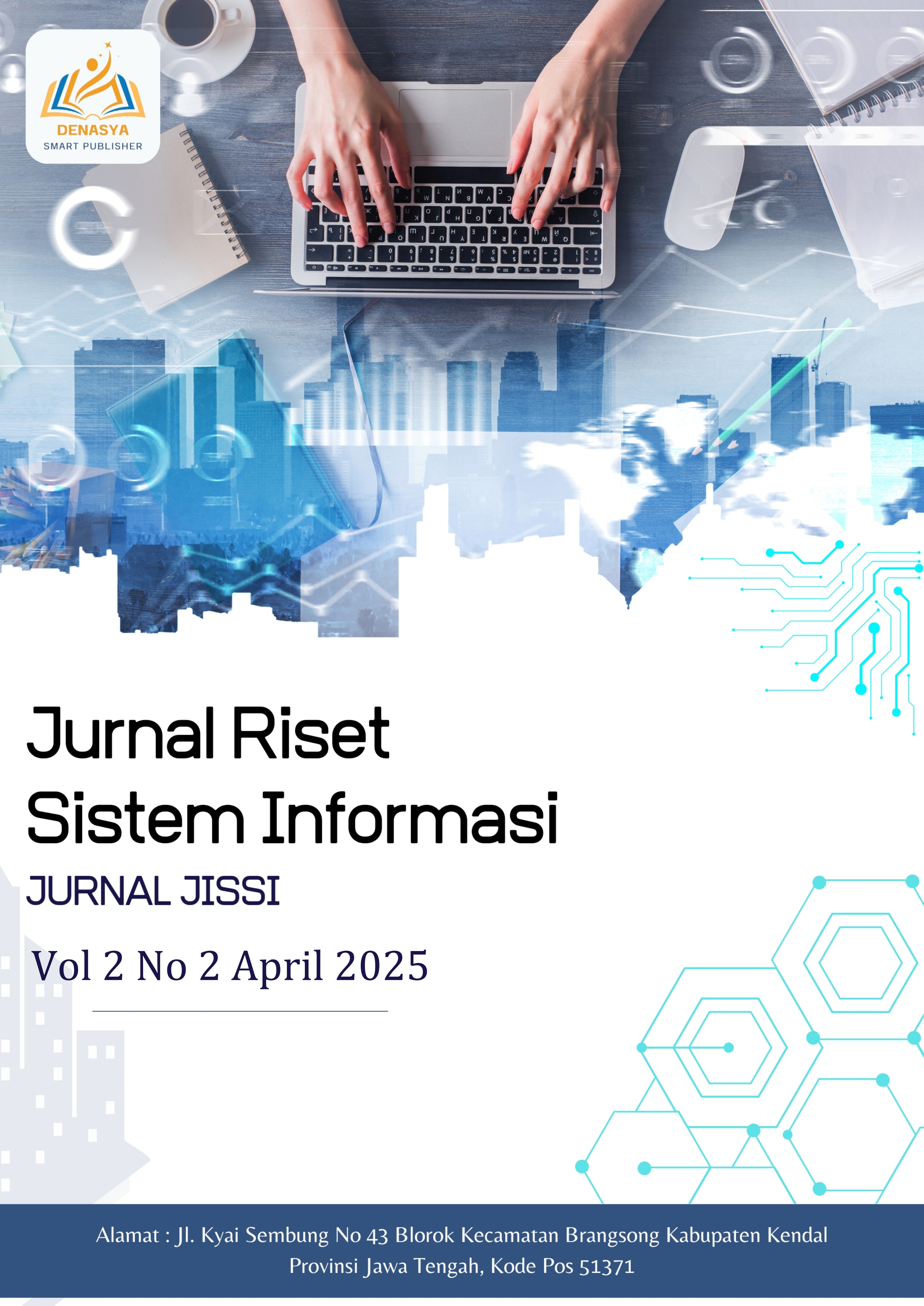IMPLEMENTASI RFID UNTUK MENINGKATKAN EFISIENSI LAYANAN SIRKULASI DI PERPUSTAKAAN
DOI:
https://doi.org/10.69714/crjgwr14Keywords:
RFID, layanan sirkulasi, otomatisasi, teknologi informasiAbstract
This study examines the implementation of Radio Frequency Identification (RFID) technology in enhancing the efficiency of library circulation services. RFID technology offers an innovative solution for managing collections and circulation services, such as borrowing and returning books, which were previously done manually. Utilizing radio waves, RFID enables automatic identification, tracking, and security of collections, thereby improving data accuracy and operational efficiency. This study employs a literature review approach to evaluate the benefits, challenges, and optimization strategies of RFID adoption in libraries. The findings indicate that RFID can reduce service time, enhance user experience, and support self-service features such as self-check and book-drop systems. However, challenges such as high implementation costs and the need for librarian training remain significant barriers. This study aims to provide guidance for libraries looking to adopt RFID technology to improve their services and maintain relevance in the digital era.
References
S. B. Sinaga and P. M. Hasugian, “Perancangan Sistem Informasi Perpustakaan AMIK STIEKOM Sumatera Utara Berbasis Teknologi Radio Frekuensi Identification (RFID),” MEANS (Media Informasi Analisa dan Sistem), vol. 2, no. 1, pp. 7–11, 2017, doi: 10.54367/means.v2i1.15.
S. Nurmayuni and A. Nashir, “Tren layanan sirkulasi perpustakaan menggunakan teknologi RFID: Kajian literatur di UIN Sunan Ampel Kampus Gunung Anyar Surabaya,” Indonesian Journal of Academic Librarianship , vol. 6, no. 1, pp. 46–51, 2022.
S. Zefi, M. M. Rose, R. Duri, I. Nurjanah, and R. Kartila, “Perancangan Aplikasi Website dengan Integrasi RFID untuk Sisem Pendataan Informasi Perpustakaan Design of Website Application with RFID Integration for Library Information Recording System,” vol. 2, no. 2, pp. 62–66, 2023.
M. Eka Apriyani, A. Dzikri, and P. Negeri Batam, “Pemanfaatan Sistem Informasi Terintegrasi Untuk Pengembangan Perpustakaan Politeknik Negeri Batam,” | Jurnal Integrasi |, vol. 5, no. 1, pp. 91–92, 2013.
F. Hamdani, “Penerapan Rfid ( Radio Frequency Identification ) Di Perpustakaan : Kelebihan Dan Kekurangannya,” Penerapan RFID (Radio Frequency Identification) di Perpustakaan: Kelebihan dan Kekurangan, vol. 2, no. 1, pp. 71–79, 2014.
M. J. R. Aipasha and T. W. H. Murtiningsih, “EFEKTIFITAS RADIO FREQUENCY IDENTIFICATION ( RFID ) DI KELOMPOK LAYANAN TERBUKA PERPUSTAKAAN NASIONAL REPUBLIK INDONESIA Oleh : Muhammad Jevi Rian Aipasha * Pembimbing : Dra . Tri Wahyu Hari Murtiningsih , M . Si Program Studi Ilmu Perpustakaan , Fakultas,” Efektifitas Radio Frequency Identification (RFID) di Kelompok Layanan Terbuka Perpustakaan Nasional Republik Indonesia.
N. Ramadhani, “IMPLEMENTASI RFID ( RADIO FREQUENCY IDENTIFICATION ) PADA SISTEM INFORMASI SLIMS DI UPT PERPUSTAKAAN UNIVERSITAS NEGERI YOGYAKARTA Nadya Ramadhani Jurnal Multidisipliner KAPALAMADA | Vol 2 . No 3 September 2023 Jurnal Multidisipliner Kapalamada Perkembang,” Jurnal Multidisipliner Kapalamada, vol. 2, no. 3, pp. 161–172, 2023.
S. Rachmatullah and N. H. Hari, “Penerapan Sistem Informasi Presensi Pengunjung Perpustakaan Berbasis RFID di SMA Negeri 1 Pamekasan,” Batara Wisnu : Indonesian Journal of Community Services, vol. 2, no. 2, pp. 281–291, 2022, doi: 10.53363/bw.v2i2.97.
P. T. Parmawati, P. Sukayana, and U. P. Ganesha, “Sistem Otomasi Layanan Sirkulasi Dengan Menggunakan Radio Frequency Identification Di,” vol. 3, no. 1, pp. 348–360, 2014.
R. M. Insan, R. Ruuhwan, and R. Rizal, “Penerapan Teknologi Radio Frequency Identification (RFID) Pada Data Kunjungan Perpustakaan,” Informatics and Digital Expert (INDEX), vol. 1, no. 1, pp. 1–6, 2019, doi: 10.36423/ide.v1i1.281.
Z. Arifin, D. Rahmawati, and H. Sukri, “Rancang Bangun Sistem Informasi Perpustakaan Menggunakan Radio Frequency Identification Berbasis Internet of Thing,” Seminar Nasional Fortei Regional, vol. 7, pp. 1–7, 2020.















